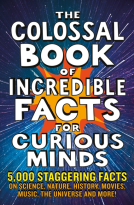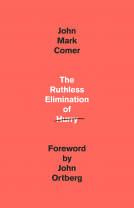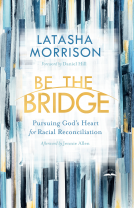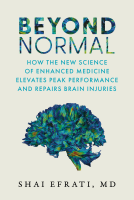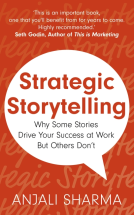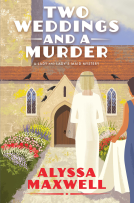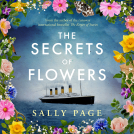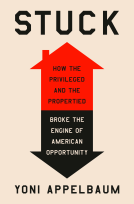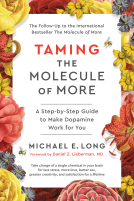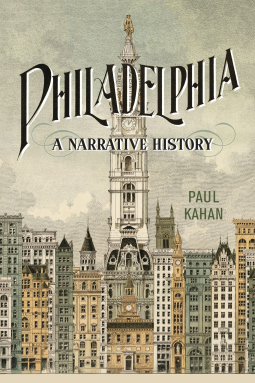
Philadelphia
A Narrative History
by Paul Kahan
This title was previously available on NetGalley and is now archived.
Send NetGalley books directly to your Kindle or Kindle app
1
To read on a Kindle or Kindle app, please add kindle@netgalley.com as an approved email address to receive files in your Amazon account. Click here for step-by-step instructions.
2
Also find your Kindle email address within your Amazon account, and enter it here.
Pub Date Oct 29 2024 | Archive Date Nov 05 2024
Talking about this book? Use #Philadelphia #NetGalley. More hashtag tips!
Description
Philadelphia is famous for its colonial and revolutionary buildings and artifacts, which draw tourists from far and wide to gain a better understanding of the nation’s founding. Philadelphians, too, value these same buildings and artifacts for the stories they tell about their city. But Philadelphia existed long before the Liberty Bell was first rung, and its history extends well beyond the American Revolution.In Philadelphia: A Narrative History, Paul Kahan presents a comprehensive portrait of the city, from the region’s original Lenape inhabitants to the myriad of residents in the twenty-first century.
As any history of Philadelphia should, this book chronicles the people and places that make the city unique: from Independence Hall to Eastern State Penitentiary, Benjamin Franklin and Betsy Ross to Cecil B. Moore and Cherelle Parker. Kahan also shows us how Philadelphia has always been defined by ethnic, religious, and racial diversity—from the seventeenth century, when Dutch, Swedes, and Lenapes lived side by side along the Delaware; to the nineteenth century, when the city was home to a vibrant community of free Black and formerly enslaved people; to the twentieth century, when it attracted immigrants from around the world. This diversity, however, often resulted in conflict, especially over access to public spaces. Those two themes— diversity and conflict— have shaped Philadelphia’s development and remain visible in the city’s culture, society, and even its geography. Understanding Philadelphia’s past, Kahan says, is key to envisioning future possibilities for the City of Brotherly Love.
Paul Kahan is an expert on U.S. political, economic, and diplomatic history. He earned his Ph.D. in U.S. history from Temple University and lives outside of Philadelphia with his family. This is his seventh book. You can learn more about Dr. Kahan and his work at www.paulkahan.com.
Advance Praise
“Philadelphia has been waiting a long time to have its story told in a single compact volume. In this sharp and accessible history, Paul Kahan succeeds in identifying the grand forces that shaped the city’s character and demonstrates how they still animate its behavior today for both good and ill. This is the perfect introduction to understanding how Philadelphia became the city it is today.”
—Inga Saffron, Architecture Critic, The Philadelphia Inquirer
Available Editions
| EDITION | Hardcover |
| ISBN | 9781512826296 |
| PRICE | $39.95 (USD) |
| PAGES | 424 |
Available on NetGalley
Featured Reviews
 Flo J, Educator
Flo J, Educator
Philadelphia fascinates most of the people versed into American history. This book is great to deepen one's knowledge. the writing is fluent, one never gets bored, and the level of research is amazing. A very precious book to be kept in one's library, to sustain knowledge and develop the inquisite mind.
All opinions are mine, thank you to the author and Netgalley.
 Adeeba A, Reviewer
Adeeba A, Reviewer
I had never heard of Philadelphia before coming across this story. I imagined it to be some sort of fantastical name. As someone from outside the United States, reading about the rich history of such a small place fascinated me. I had no idea that a small city could hold such deep history. Not only has the author succeeded in detailing every event that happened, but he has also written it so well that I was completely immersed in the story.
I began the story expecting it to be somewhat boring, but the historical evolution—from the Lenape inhabitants to the cultural diversity of the 21st century—kept me mesmerized. I developed a keen interest in Philadelphia's history and how it became what it is today.
Philadelphia is known as the city of murals and artifacts, and I can see the connection. The detailed analysis as to how each race and culture influenced the city. How It became famous for its colonial and revolutionary buildings and the stories behind them. All points of perspectives are covered by the author. The author has conducted extensive research to understand Philadelphia's landscape in terms of race, culture, conflicts, movements, revolutions, and diversity. Philadelphia is one of those cities that existed long before their home country. Its history is so intricate that it has beautifully laid the foundation. Philadelphia existed long before the Liberty Bell was first rung, and its history extends well beyond the American Revolution. Paul Kahan has successfully presented a comprehensive portrait of the city, from the region's original Lenape inhabitants to the myriad of residents in the twenty-first century.
As any history of a city should, this book states the people and places that make the city unique: from Independence Hall to Eastern State Penitentiary, from Benjamin Franklin and Betsy Ross to Cecil B. Moore and Cherelle Parker. Each person, event, and situation has significantly contributed to Philadelphia's regime. Kahan also shows us how Philadelphia has always been defined by ethnic, religious, and racial diversity. The timeliness has been woven orderly presenting the Dutch, Swedes and Lenape in the seventeenth century. Then the Black and formerly enslaved people in the 19th century; and the twentieth century, when it attracted immigrants from around the world. This diversity, however, often resulted in conflict, especially over access to public spaces. These two themes—diversity and conflict—have shaped Philadelphia's development and remain visible in the city's culture and society throughout time.
The language and facts are meticulously accurate, and the author has successfully written a comprehensive analysis of Philadelphia. I recommend this book to history enthusiasts. They will thoroughly enjoy it. I rated this book 4 out of 5 stars due to it being too fact-driven. I wasn't able to feel at ease while reading it, as the events kept coming, making it seem entangled. Nonetheless, it did not cause me to lose my composure. The grammar was impeccable. Paul Kahan did a great job in creating such a meticulous novel.
As a Philadelphia native, I did not think I could love (or miss) my hometown more, then... this book. Philadelphia by Paul Kahan is impeccably researched and well-plotted. I liked the chapter layouts and themes that were crafted within this read because they added an ease of consumption while building upon the narrative experience. Rich with history and depth, Philadelphia by Paul Kahan needs to be your next read. This book will make you want to visit the city of brotherly love and sisterly affection.
I am looking forward to purchasing a physical copy once it is published.
Paul Kahan, Philadelphia, University of Pennsylvania Press, October 2024.
Thank you, NetGalley, for providing me with this uncorrected proof for review.
Philadelphia is an immense narrative history, laying out a story that is engrossing, while so dense that initially it is difficult to decipher the themes that some readers will want to draw from the material. I am one such reader, and was not disappointed, although I needed to adopt an unfamiliar reading style. Rather than surge through the book, I found it useful to ensure that read a few chapters, reconcile the material into the thematic streams that are my preferred historical accounts and move forward. I am so pleased that I did, the narrative was so detailed, so informative, so enticing that from knowing little of this part of American history, Philadelphia became a known, thriving city of ethnic, religious, and racial diversity from the seventeenth century to modern times. In the introduction these are referred to as grand forces. Indeed, general categorisation as ethnic, religious and racial, does not fully describe the life that Kahan gives to each. It is this life that makes Philadelphia a truly engaging history, one to which I shall return on many occasions.
The chapter headings - Philadelphia before 1681; The Founding of Philadelphia, 1681 - 1718; Franklin’s 1718 – 1765; The Revolutionary City, 1765 – 1800; Civil War and Reconstruction, 1854 – 1876; Corrupt and Contented, 1876 – 1901; Wars, Abroad and at Home, 1901 – 1945; The Golden Age? 1945 – 1976; Crisis…and Renaissance? Philadelphia Since 1976; and the conclusion, A symbol and a Place provide markers to the swathe of ideas and information that is covered in Philadelphia. In the introduction the way in which citizens’ dedication to using public space to encourage particular outcomes is referred as a theme Kaplan addresses throughout the book. To have this pointed out was useful and I would have liked more such pointers to deal with the mass of information. On the other hand, having so much detail provides the material for developing a thematic approach.
In his conclusion, Kahan refers to the continuing history being made in Philadelphia as he completes his narrative. He talks of his own history in Philadelphia, his familiarity with popular culture associated with the city, its historic sites and the changes that have taken place in his lifetime. It is Kaplan’s own willingness to be engrossed with the city, alongside his academic prowess and diligence that makes Philadelphia a book that, while I found challenging initially, one that I genuinely admire.
5⭐
Brilliant!
Very informative. A history of not just Philadelphia but a history of America with Philadelphia as a sort of main character.
This book covers the history of Philadelphia since its inception in 1682 (and a little bit before) to the present day.
Divided in 10 chapters, it discusess arts, architecture, culture, demographics, economics, people, race, politics, and plenty more of the city of Philadelphia and its relations with the commonwealth (Pennsylvania), the country (USA) and its own people through different times (Independence, Revolution, Civil War, World Wars I and II, the Great Depression).
Recommended.👍 (specially if you are a history buff).
 Reviewer 1231554
Reviewer 1231554
I found this book to be very interesting. As someone who used to live in Philadelphia and someone interested in history, I have always been fascinated about the history of Philadelphia. This book did not disappoint. It is clear how much research and effort Paul Kahan put into this book. I thought I knew a lot about Philadelphia, but I had no idea how much information I was unaware of. I learned so much about Philadelphia and how it has developed into the city it now is. I found this book to be a fairly quick read. I would definitely recommend this book to any fan of Philadelphia or history buff.
Kahan begins with the Paleo-natives that arrived in the Delaware River Valley around 18,000 years ago, who eventually became the Lenni Lenape. Dutch traders were the first European foothold in 1614, followed by the Swedes and the English, pinning the natives against each other. After William Penn arrived, with an idea for a Great Experiment, it became a haven for religious dissenters and immigrants, most of them German, Irish, Jews, French Huguenots and later Italians. Some were the nation's earliest abolitionists, although race riots and tension continued throughout Philly's history. By the 1760s Philly's population had exploded and it was a commercial powerhouse. In the Industrial Age, Philly emerged as a popular tourist destination. New rail lines and canals finally linked both sides of Pennsylvania. Leading up to the Civil War, Philly was a key stop on the Underground Railroad. 20th c. civic celebrations helped unite many communities and WWI gave it a desperately needed economic boost and the world's largest shipyard. But it is largely thanks to civic-minded women that Philly's historic buildings are preserved for us today.
I'm glad Kahan didn't dismiss the impact of local Natives or the rise of Philly's prominent Black community. They're especially attentive towards the latter and rightfully so. Pennsylvania under the Penn family was complicated enough, so thankfully early colonial wars are only mentioned. After this though, the narrative loses its brisk pacing as the reader is led through lists of public works, deep politics and any famous figure that simply passed through Philly. The 19th c. portion prior to the Civil War, esp. suffers from copious name dropping. The timeline is difficult to follow at times, but the research effort is mind-blowing. I was surprised by how many cultural and infrastructural firsts Philly boasts. There's so much great history here, but it just needs some of the fat trimmed off. Honestly the reader will learn it all, and it was a much needed crash course for my visit to Philly on July 4th!
3.5 out of 5! Thank you Netgalley and University of Pennsylvania Press for approving my request!
Being from Philadelphia, I was eager to read this book. It did not disappoint, and it was fun to travel back to the city I love, where I grew up. This is a great book for any lover of history, I would highly recommend it!
‘As it entered the third decade of the twenty-first century, Philadelphia boasted a racially, ethnically and religiously diverse population.’
Until I read this book, my knowledge of Philadelphia was limited to its role as the central meeting place for America’s founding fathers back in the 18th century and 21st century drug-related issues which crop up in other areas of my reading. And yes, while I was aware that there is more to Philadelphia than these two points of focus, I had not explored much further.
In this book, Mr Kahan starts his history with the original Lenape inhabitants, covers the founding of Philadelphia by European settlers and moves into the present. Philadelphia’s diversity has also been a cause of conflict, especially in terms of access to public space.
I read this book quite slowly, pausing after each chapter to absorb the information imparted. The trickery of the Walking Purchase (in 1737) reminded me of John Batman’s ‘treaty’ with Indigenous Australians in 1835. I was caught up in the history of the Liberty Bell, and in learning more about Benjamin Franklin. I kept returning to the geography of Philadelphia, with its impact on the shape of the city.
Mr Kahan has divided his narrative into ten chapters and a conclusion. While I found the entire book fascinating, I was particularly interested in the story of Philadelphia since 1876.
I’d like to visit Philadelphia one day, to see the historic sites for myself.
Note: My thanks to NetGalley and The University of Pennsylvania Press for providing me with a free electronic copy of this book for review purposes.
Jennifer Cameron-Smith
I was looking forward to this one as Philly is a city I've always been interested in and haven't yet had the chance to visit, but this book was very dry and a slog to get through. It definitely had a bit of a textbook feel.
Having fallen in love with Philly when I was in school there, I was thrilled to have the chance to read Paul Kahan’s forthcoming history of Philadelphia. Unfortunately, for this reader, while meticulously researched and footnoted (the footnotes and bibliography take up one third of the book), there were so many minute details about Philly history that made continued reading very difficult, especially the detailed discussions about the economics of that particular period of time. For me, there was way too much information. Given that the publisher is the UPenn Press, I should have realized that this wasn’t a casual history of the city, but rather a scholarly one. This isn’t for the faint of heart. DNF at 21%.
My thanks to the publisher and Netgalley for providing an ARC of the book.
 Stephanie H, Reviewer
Stephanie H, Reviewer
My enthusiasm for American history is long standing and it has been a goal of mine to further study the history and development of all fifty states and territories individually, including notable cities and towns. To my delight, the discovery of this book was perfect timing. Learning more about Philadelphia has been high on my list for some time.
Paul Kahan presents the reader with a sweeping narrative of the city’s history beginning with the Lenape tribe who inhabited the land that became Philadelphia all the way through the twenty-first century. Highlighting individuals who made their mark on the city’s history and delves into cultural diversity of the people and explore its uniqueness of what the city offers that makes Philadelphia stand out.
As I got a few chapters in, I quickly realized that I had only scratched the surface of Philadelphia origins and history. I found myself taking pages of notes and jotting down questions I had regarding several notable people and details I did not previously know. For example: Charles Dickens visited the city. The city is home to the first natural history museum in the United States. Philadelphia remained the world’s leading publishing center and had several subscription libraries. In 1850, Philadelphia was still home to a few enslaved people. The first hospital was in Philadelphia and so on… There are a few people mentioned I’m looking forward to learning more about: Folklorist and Humorist Charles Godfrey Leland, William Hamilton, John Bill Rickets, Cecil B. Moore and Cherelle Parker.
This book is packed full of information and at times, I felt a few topics or mentions jump from one to the other too quickly without being fleshed out. Personally, I wanted to have a bigger picture of certain elements of history. Though, by reading Kahan’s account, I understand the direction he chose to go with, and nor did my opinions on that score take away from how much I enjoyed reading his narrative. I will say that while this book is educational and excellent, the dense information provided may be slightly overwhelming to readers who are not used to reading such material. I do recommend taking your time with this book. You’ll be glad you did.
As for the information of the history provided in this book, I can only attest to a few of its accuracies on account that I chose to read this book wanting to go more in-depth with the timeline of the city’s growth and to the contribution of culture, architecture, city planning, science, political arena, and government formed through the centuries. Kahan meets all those points, and it is apparent that the research and time that went into writing this account of Philadelphia’s history, ever-growing culture and diversity is quite extensive. I respect Kahan’s intellectual ability to provide readers with this profound selection of work.
I’m delighted to have chosen Kahan’s book to read as I have learned tremendously from its pages, and it has provided me with a comprehensive source for further study and reference. I will be adding a physical copy of this book to my history stacks.
 Reviewer 725763
Reviewer 725763
This book offers a comprehensive history of Philadelphia, encompassing its Lenape origins, its well-known colonial and revolutionary past, and its diverse population through the 21st century. The book is interesting, informative, and easy to read.
Thanks, NetGalley, for the ARC I received. This is my honest and voluntary review.
I’ve spent my last two summers in Philadelphia so I’ve gotten a little more interested in its history than I ever was before. Whe you walk through the city, you are surrounded by the histroic and obvious landmarks. It was cool to get a more in depth history than what I got as a tourist.
 Brittany C, Reviewer
Brittany C, Reviewer
I read this book in preparation for an up-coming trip to Philadelphia and it did not disappoint. The details and research throughout the book were incredible. I learned so many new things and it made my visit to the city that much more special.
This book is easy to read and contains lots of information. I enjoyed it.
Thanks to Net Galley and the publisher for the ARC.
Readers who liked this book also liked:
Nigel Henbest; Simon Brew; Sarah Tomley; Ken Okona-Mensah; Tom Parfitt; Trevor Davies; Chas Newkey-Burden
Entertainment & Pop Culture, Humor & Satire, Nonfiction (Adult)

